#toyota bev
Explore tagged Tumblr posts
Text
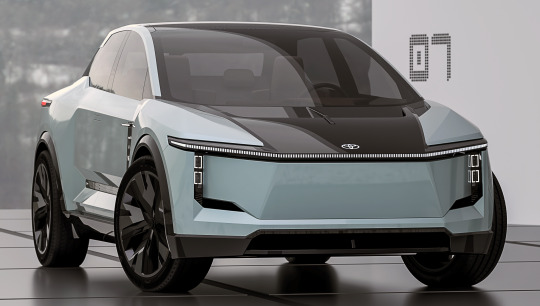

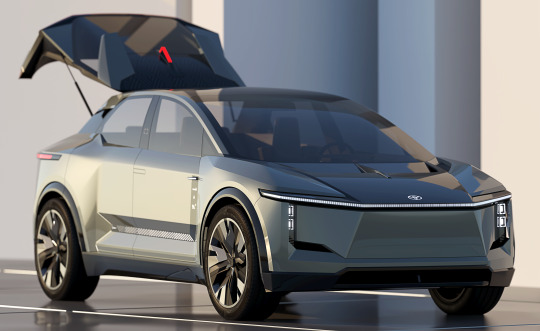
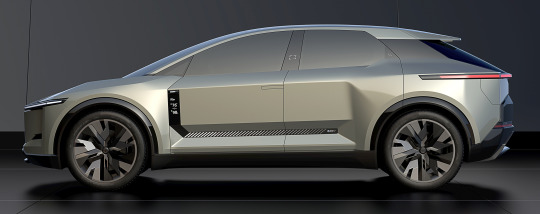
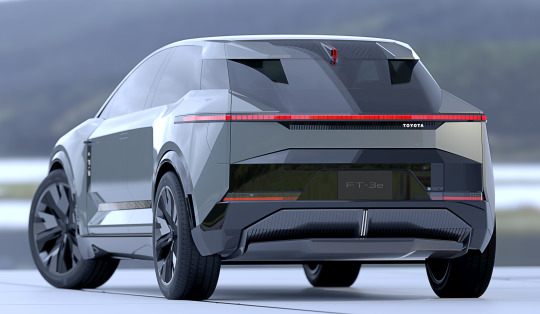
Toyota FT-3e Concept, 2023. A prototype for a next generation BEV that was presented at this year's Japan Mobility Show. Digital displays running from the lower side body to the upper door provide information, including battery charge, onboard temperature, and interior air quality when the driver approaches the car.
#Toyota#Toyota FT-3e#concept#design study#prototype#BEV#electric car#futuristic#Japan Mobility Show#2023#hatchback
112 notes
·
View notes
Text

Suzuki ve Toyota'nın Elektrikli Araç İş Birliği: Yeni BEV SUV Modeli Suzuki ve Toyota'nın Elektrikli Araç İş Birliği Suzuki ve Toyota, uzun süredir devam eden iş birliklerini elektrikli araçlar alanına taşımaya karar verdi. İki...
#2025#4WD#BEV#çeviksürüş#ElektrikliAraç#hindistan#işbirliği#karbonnötr#otomobilüretimi#otomotiv#suv#suzuki#toyota
2 notes
·
View notes
Text
The Lies about EV(BEV): Popularization Reports in Japan (Essay)

Lithium-ion battery
Currently, the popularity of EVs is declining on a global scale. BYD, which boasts the world's largest production volume, surpassing Tesla, has a mountain of unsold EVs in stock. Volvo and Volkswagen, which had planned to focus their car production on EVs, have both retracted their plans.
The reason why EVs were originally intended to be a standard model in the EU was to exclude Toyota cars, as the EU could not compete with Toyota in gasoline vehicles. However, they have been overtaken by Chinese cars, which are also of color, and they have hastily imposed tariffs. Tesla sales have fallen in the USA, while hybrid cars are selling well.
In the first place, EVs are little more than personal computers, and it is easy for various companies to enter the market, but they cannot compete with gasoline vehicles in terms of sophistication and stability. Japan is trying to popularize EVs by offering subsidies, but whether it is Tesla or BYD, they barely sell in Japan. This is because EVs are not attractive to Japanese people, who have a discerning eye for cars. EVs have fatal problems with their batteries and cannot replace gasoline engine vehicles. EVs cannot be reused. However, the Japanese media ignores these problems and promotes the idea that EVs are the only future. Isn't this biased reporting?
Rei Morishita
2024.12.19
日本におけるEV普及報道の虚偽(エッセイ)
現在、世界規模で、EVの普及に陰りが見えている。テスラを抜いて世界一の生産量を誇るBYDも、EVの売れない在庫の山である。EV一本に自動車の生産を絞るとしていたボルボもフォルクスワーゲンも、その方針を撤回した。
そもそもEVをEUでの統一車種としょうとしたのは、エンジン車ではトヨタに太刀打ちできないEUがトヨタ車を締め出すためだった。でも同じ有色人種の中国車に席巻されて大慌てで関税を掛けている。USAでもテスラの売れ行きは落ち、ハイブリッド車はよく売れている。
そもそもEVは、パーソナルコンピューターに毛の生えたもので、いろいろな異種業者が参入しやすいが、その精緻さ、安定性においてエンジン車には勝てない。日本では補助金を付けてEVを普及させようとしているが、テスラにせよBYDにせよ、日本ではほとんど売れない。自動車を見る目の肥えた日本人には、EVが魅力的ではないからだ。EVは致命的な諸問題をバッテリーに抱えており、エンジン車の代替品にはならない。EVは、再利用も出来ない。でも日本のメディアは、これらの問題を無視して、EVにのみ未来があるように喧伝している。これは偏向報道ではないか。
#Lies about EV#BEV#EV#rei morishita#essay#BYD#EU#Toyota#Volvo#Volkswagen#personal computers#Tesla#batteries#EVs#Popularization Reports
1 note
·
View note
Text
2024 Lexus LS 500h: Can Hybrids Make Sedans Relevant Again?
When the Lexus LS was introduced as the brand’s seminal offering, full-size sedans were the flagships of every luxury lineup. But that was in 1989 when Taylor Swift was born and when Elon Musk was a teenager leaving South Africa for a new life in Canada. In the ensuing decades, American luxury car buyers have largely turned their backs on big sedans, preferring the upright stance of SUVs. But…

View On WordPress
#2024 Lexus LS 500h#2024 Toyota BZ4X#Battery-Electric Vehicle#BEVs#J.D. Power#NACTOY#North American Car of the Year#SUV Insurance#Tesla Cybertruck#Truck Insurance
0 notes
Link
#batteryelectricvehicles#BEVs#Brussels#BYD#BYDToyotaEVTechnology#carbonneutralityby2035#FAWToyotaMotor#Futurride#LFP#lithiumironphosphate#sustainablemobility#Toyota#ToyotabZ4X#ToyotaEurope#ToyotaFT-Se#ToyotaKenshikievent#ToyotaSportCrossover#ToyotaUrbanSUV#Toyota��sFT-3e
1 note
·
View note
Text
#Toyota#all-solid-state batteries#electric vehicles#EVs#next-generation technology#enhanced range#rapid charging#Tesla#automakers#lithium-ion batteries#solid electrolytes#miniaturization#cost-effective production#BEV Factory#competitiveness#Honda#Nissan#giga casting#manufacturing efficiency#japan#tokyo#innovation#clean energy#environmental impact#decarbonization
0 notes
Text
part 6 of modern outsiders headcanons!!!
more under cut!
• Instead of the DX, Sodapop and Steve work at a QuikTrip gas station (The actual location of it is 2 blocks away from the Chick-fil-A Johnny works at surprisingly) (yes i’m using real locations for these)
• Ponyboy lives off of Panera charged lemonades. Darry tried to cut him off (after ppl started dying from them) but Ponyboy sneaks them
• The Hatman visits Johnny when he’s on some sort of hallucinogens
• Cherry drives an electric car, Marcia drives a green volkswagen beetle and Bev drives a blue jeep
• Two-Bit drives a 2005 red toyota camry that’s in a horrible condition
• Cherry and Marcia LOVE bath and body works
• Dally’s a D1 drunk driver
• Ponyboy yaps about his weird interests to Johnny (who actually listens to him without judging)
• Sodapop really loves crumbl cookies
• Johnny is saving up for a pair of golden goose shoes (he’ll never be able to afford it)
• Randy says “i was born in the wrong generation” and he longs for the 70s
• Chet, Brill, and Trip are one ice cream hair hive mind
• Bev says “i’m just a girl 🎀” after running 5 red lights or after making fun of minorities
• Sodapop stole one of those coca-cola freestyle machines and put it in the house. Darry let them keep it
• Two-bit online bets on football, he’ll make some stupid parlay and bet 100 dollars on it (he’s wins 30% of the time)
• Darry also online bets, but he makes bets that are almost guaranteed and only puts 10 dollars on it
• Marcia has an insanely high snapscore. It’s in the millions.
• Mrs and Mr Curtis used to take the brothers to great wolf lodge, Sodapop LOVED that place and on their third visit they found out about Pony’s OCD
• Two-Bit and Johnny vandalize Bob’s cybertruck every week
• Ponyboy is a film bro
• The gang loves going to Applebees, they’ll share two entrees and they’ll be so loud and annoying
• Marcia had a brat summer
(i’ve got a list of all my headcanons here!)
#Ive lost the plot#again au is a joke don’t yell at me about mischaracterization idgaf#the outsiders modern au#the outsiders#johnny cade#ponyboy curtis#sodapop curtis#cherry valance#marcia the outsiders
66 notes
·
View notes
Text
elektromos autók és az eu
szinte biztos vagyok benne, hogy az eu nem fogja elengedni az autóipara kezét, ugyanis túl sokan dolgoznak az iparágban, és túl fontos a döntéshozók számára.
a feldolgozóipart lehet a legkönnyebben hadigazdaságra állítani és alapvetően drága, ideális esetben exportképes termékeket állít elő. mondjuk egyre inkább az a stratégia, hogy az egy bizonyos piacra termelő gyárak a vámhatárokon belül vannak. amerikában van vv és toyota gyár és európában van ford és tesla gyár.
a kérdés részben az, hogy beengedjük-e kínát azután, hogy piacvezetővé vált az ev-k terén (ezentúl nem yrom le többet azt, hogy elektromos autó, mindenhol az ev fog szerepelni, esetleg bev=tisztán elektromos, phev=tölthető hibrid). kína az európai és amerikai márkákat úgy engedte be, hogy vegyesvállalatot kellett létrehozniuk, ami segítette a technológia-transzfert a belső égésű motorokkal (ICE) felszerelt autók terén.
Intő jel, hogy kína nem az ice-knek köszönhetően lett a világ autóipari exportbajnoka. bár tény, hogy bizonyos szegmensekben azon a területen is versenyképes. a vegyesvállalat modell igényli talán a legkevesebb pénzt is. érdés azonban, hogy az eu autóipara képes-e annyit tanulni, hogy versenyképes legyen egy olcsóbb munkaerővel és elnézőbb külpolitikával rendelkező,országgal szemben egy olyan exportpiacon, ahol a technológia egy másik piacról érkezik? szerintem nem így az eu autóiparának mindenképp százmilliárd eurós nagyságrendben kell támogatásokat adni.
az a kérdés azonban nem igazán merül fel, hogy ki kapja ezt a támogatást, annyira nyilvánvaló, hogy a fennálló, működő európai cégek. és ezért halott az európai innováció is. az eu munkaerőpiacát szabályozó, a nemzetközi pénzügyi sajtó szerint túlságosan munkaerőbarát szabályok csak egy olyan startup esetében jelentősek, amelyik ki akar rúgni embereket, egy dinamikusan növekvő starupnál a leépítésekről szóló szabályozás fel sem merül. ha pedig nem j9tt be a tét, a csőd után ígyse-úgyse marad semmi. ha a kockázati tőke modellje az, hogy 100-ból 1 fizet, akkor nem kéne, hogy számítson az, hogy az amerikai szabályozás lehetőséget teremt 100-ból 20 vállalat "racionalizálására", elérve egy, az eredetileg befektetett tőkére vonatkozó 10 %-os hozamot.
lehet azt mondani, hogy ezen a 2%-os várható hozamkülönbségen múlik az európai kockázati tőke, de szerintem nem ez a helyzet. a szilícium-völgy nem az adózási szabályai miatt van ott és ahol. viszont ha már egy stratégiai iparágat akar az eu megmenteni, akkor azt s ki lehetne próbálni mondjuk 20-80 equity/det finanszírozásban, hogy mi történik akkor, ha mondjuk 1 vw helyett 10 ev startupot finanszírozunk. a vegyesvállalati követelménnyel ráadásul duplázható is az elkölt��tt pénz.
az európai arisztokrácia él és virul, de valójában nem muszáj mindig őket megmenteni. valójánam a náci porsche-család megmentése az unió leszakadását jelenti.
34 notes
·
View notes
Text
January saw plugin EVs take 96.9% share in Norway, up from 93.9% year on year. BEVs alone took almost 96% of the market. Overall auto volume was strongly up on seasonal norms, at 9,343 units, up 82% YoY. The Toyota BZ4X was the best-seller.

#Norway#ev sales#ev market#ev adoption#affordable EV#competition#Toyota BZ4X#electric car#electric vehicle#energy independence#demise of big oil
2 notes
·
View notes
Text
What are the Various Types of Electric Vehicles and How Do They Work?

The automotive landscape is undergoing a monumental shift, fueled by technological advancements and a growing awareness of environmental concerns. At the forefront of this transformation are Electric Vehicles (EVs), heralding a cleaner and more sustainable era of transportation. In this in-depth exploration, we'll navigate through the intricacies of electric vehicles, dissecting their diverse types, unraveling their operational mechanisms, and glimpsing into their promising future.
Understanding Electric Vehicles
Electric Vehicles distinguish themselves by relying on electric motors powered by electricity stored in a battery. This departure from traditional internal combustion engines presents a promising solution to environmental challenges posed by conventional vehicles.
The Intricate Working of Electric Vehicles
Breaking down the workings of an Electric Vehicle reveals a symphony of components, from the crucial battery pack and controller to the electric motor and accelerator pedal. This orchestrated dance results in a clean, efficient, and eco-friendly mode of transportation.
Exploring the Diverse Electric Vehicle Types
Electric Vehicles come in various flavors, each catering to specific user needs:
Battery Electric Vehicle (BEV): The purest form of electric mobility, BEVs run solely on electricity, eliminating tailpipe emissions and contributing significantly to reducing air pollution. Examples include the Tesla Model 3 and Nissan Leaf.
Hybrid Electric Vehicle (HEV): Bridging the gap between traditional and electric vehicles, HEVs combine an internal combustion engine with an electric motor, enhancing fuel efficiency. Popular models include the Toyota Prius and Honda Insight.
Plug-In Hybrid Electric Vehicle (PHEV): Offering flexibility with electric and gasoline power, PHEVs can operate emission-free for shorter distances while providing extended range for longer journeys. The Chevrolet Volt and Ford Escape PHEV are notable examples.
Fuel Cell Electric Vehicle (FCEV): Using hydrogen gas in a fuel cell stack, FCEVs emit only water vapor and heat as byproducts. Though in early commercial stages, models like the Toyota Mirai are pioneering this unique approach to electric mobility.
Future Prospects and Challenges of Electric Vehicles
While the road to widespread EV adoption presents challenges like charging infrastructure development and battery technology advancements, the promise of cleaner, greener transportation beckons. As technology advances and sustainability takes center stage, Electric Vehicles are poised to revolutionize the way we move, offering not just a choice but a responsibility towards a cleaner and healthier planet.
To read more, click here.
Discover the fascinating world of advanced electric vehicles and beyond with SearchEV, your ultimate gateway to awe-inspiring EV technology and much more!
2 notes
·
View notes
Text
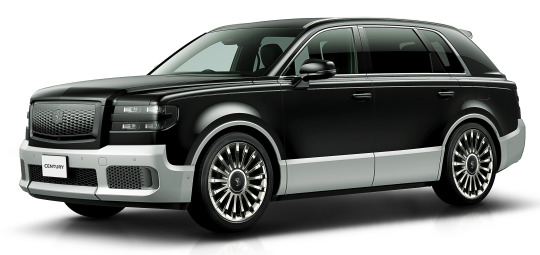
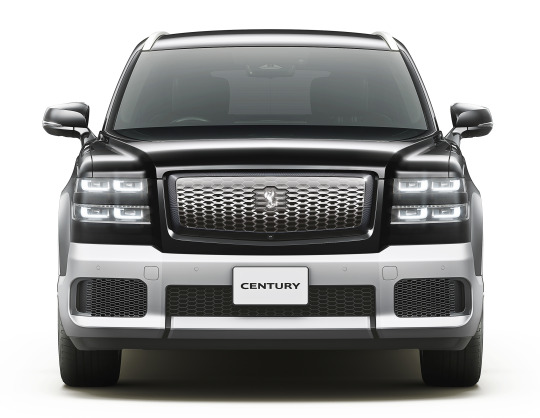

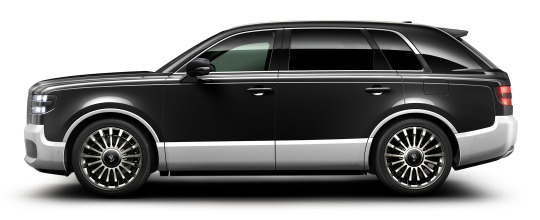
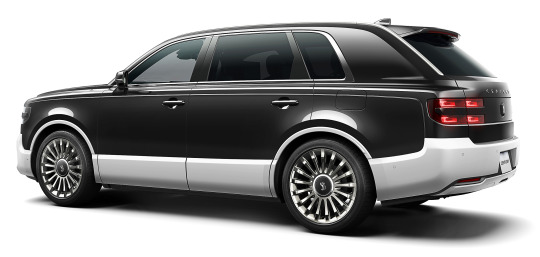
Century, 2024. Toyota have revealed their new super-luxury SUV which is the first time they have used their Century model name on anything other than a luxury saloon/limousine. The SUV is aimed squarely at the chauffeur-driven market which Toyota says has evolved as passengers seek to “utilize” their time on the road more effectively by resting or participating in online meetings. It is powered by a 406hp 3.5-litre V6 plug-in hybrid powertrain including an e-CVT gearbox and E-Four Advanced AWD system. With an electric range of 70Km the SUV can behave like a BEV in the city, transitioning to an HEV for longer journeys. The vehicle is simply badged Century, with a phoenix emblem replacing all Toyota badges.
#Century#Toyota Century#new cars#SUV#4x4#luxury SUV#hybrid#V6 Hybrid#luxury car#4-seater#chauffeur driven#phoenix#2024#2020s#CVT
222 notes
·
View notes
Text
"Battery materials and renewable charging infrastructure will eventually be plentiful," Pratt said in Hiroshima, a day before the start of a Group of Seven leaders summit in the Japanese city.
"But it's going to take decades for battery material mines, renewable power generation, transmission lines and seasonal energy-storage facilities to scale up."
Toyota, which seeks to sell 1.5 million battery-powered cars by 2026 and introduce 10 new fully electric models, has frequently argued that reaching carbon neutrality will mean the use of hybrid and fuel-cell vehicles.
3 notes
·
View notes
Text
Toyota lost to politics at Le Mans after Balance of Performance change | WEC
Toyota chairman Akio Toyoda has made his frustration clear with the change to the World Endurance Championship’s Balance of Performance on the eve of last week’s Le Mans 24 Hours. The competitiveness of their GR010 cars suffered after the BoP was adjusted 10 days before the race began. The minimum weight of the Toyota was increased by 37 kilograms, while it was also given a 4MJ increase in the amount of energy it could consume per stint. It meant the GR010 was the heaviest hypercar in the race by 16kg compared to the second-heaviest. This was Ferrari’s 499P, which was less severely affected by the BoP change. Toyoda said he was disappointed by the change in light of Toyota’s commitment to WEC, which it has participated in consistently since it was revived in 2012. “Audi withdrew in 2016, Porsche disappeared from 2018 and only Toyota remained in the top category of Le Mans and fought,” he told the Toyota Times. “We really welcomed the return of other manufacturers this year. “What we are doing is ‘sport where athletes fight’. That is motor sports. It’s definitely not a motor ‘politics’ that exposes the stubbornness of manufacturers. I want to say I wanted drivers, engineers and mechanics to race in a place that looked ahead to the next 100 years. When I was watching the qualifiers, I thought, ‘I lost to politics’.” Toyoda made his comments after Ferrari locked out the front row for the race. The two Toyotas, which won the opening three WEC races of the year between them, took third and fifth on the grid. Toyoda said he “doesn’t want to engage in a closed political battle that no one can see” and prefers “an open place where everyone is watching”. Advert | Become a RaceFans supporter and go ad-free “Rivals seriously fighting each other… I think that’s what sports is all about, and I’m sure the fans want to see that sort of thing.” The Ferrari of Alessandro Pier Guidi, Antonio Giovinazzi and James Calado won last weekend’s race by 81 seconds from the Toyota of Sebastien Buemi, Brendon Hartley and Ryo Hirakawa. The second Toyota retired due to damage incurred in a collision with backmarkers. Toyota also presented a concept design for a future hydrogen-powered car at Le Mans. Toyoda said he is keen to see the technology at Le Mans, where it is planned for introduction in three years’ time. “Two weeks ago I ran the Fuji 24-hour race,” he said. “While many people around the world are talking about BEVs [battery electric vehicles] as an option, we have been fighting for the realisation of a hydrogen society, believing that hydrogen is also an option. “Hydrogen has an image of an explosion, and the image that it is a dangerous fuel is hard to get rid of. I think that the image has been changed from ‘dangerous’ to ‘future’.” Toyota GR H2 Racing Concept, 2023 Toyota GR H2 Racing Concept, 2023 Toyota GR H2 Racing Concept, 2023 Toyota GR H2 Racing Concept, 2023 Toyota GR H2 Racing Concept, 2023 Toyota GR H2 Racing Concept, 2023 Advert | Become a RaceFans supporter and go ad-free 2023 F1 season Browse all 2023 F1 season articles via RaceFans - Independent Motorsport Coverage https://www.racefans.net/
2 notes
·
View notes
Text
China is the world’s largest car producer and exporter. A little-known fact is that China first became the world’s largest car exporter back in 2023, with low-cost EV companies BYD and Chery in the spotlight. The nation’s auto sector has been steadily expanding since then, with Chinese brands reaching an all-time high of 69.4% of domestic passenger vehicle market share in Q1 2025.
The growing popularity of higher-tech, EV cars has aided China’s auto sector. BYD overtook Tesla to become the world’s top EV company. BYD actually surpassed Tesla in terms of revenue back in 2018, but the two companies had tight competition. As of 2024, BYD exported 4.27 million vehicles worldwide, compared to Tesla’s 1.79 million vehicle sales. In 2025, BYD delivered 416,388 BEVs, exceeding Tesla’s 336,681 vehicles for two consecutive quarters. BYD surpassed Tesla in annual revenue for the first time in 2024, generating $107 billion (29% YoY increase) after experiencing a 40% increase in battery electric and hybris vehicle sales. Tesla posed a slight 0.95% YoY growth in 2024, generating $97.7 billion in revenue, but auto sales accounted for only $72.5 billion of total revenue.
Overall, China exported 5.86 million vehicles in 2024, a 19.3% annual increase. Mexico, Russia, Brazil, and the UAE were the top buyers. China sold 4.96 million passenger vehicles (19.7% YoY increase), 900,000 commercial vehicles (17.5% YoY increase), and 1.28 million new energy vehicles, as well as 987,000 battery-electric vehicles.
Japan is the world’s second-largest car exporter, exporting 4.22 million vehicles in 2024. This marked a -4.5% decline from 2023. Toyota remains Japan’s leading vehicle, accounting for $312.28 billion in revenue and 830,048 million vehicles.
Germany is holding onto third place in auto exports. In 2024, Germany exported 3.4 million passenger cars, marking a 2.5% annual increase. Around 25.9% of all vehicles exported from Germany last year were electric. Volkswagen Group remains Germany’s star, generating $354.86 billion in revenue for the year.
In February 2025, China’s autos accounted for 27.5% of total auto sales globally. Now, these cars are not only cheaper than what other nations like Germany or the US can produce but also more technically advanced. Governments have been placing levies in China’s auto sector for the past few years, as there is a belief China has an unfair advantage. Chinese companies are not separate from the government.
The CCP has been injecting tons of capital into private companies to expand rapidly and undercut competitors’ prices. These companies also have reduced risk as they have the government’s backing. Labor costs are far cheaper in China, and the nation does not need to export vehicle parts for production. Overall, China has been able to rapidly infiltrate the global auto markets and become the global leader.
1 note
·
View note
Link
#AreneOS#bamboo#batteryelectricvehicle#BEV#environmentalsustainability#Futurride#JapanMobilityShow#Lexus#LexusLF-ZC#LexusLF-ZL#LF-ZC#LF-ZL#omotenashi#socialsustainability#sustainablemobility#Tokyo#Toyota
0 notes
Text
On-board Charger Market Revenue, Trends, Analysis and Forecast to 2030

On-board Charger MarketGrowth Trend & Forecast with latest research study released by Delvens evaluating the market risk side analysis, highlighting opportunities, and leveraging strategic and tactical decision-making support. The report provides information on market trends and development, growth drivers, technologies, and the changing investment structure of the Global market, the On-board Charger market size is projected to reach a CAGR of 17.3% to 2030.
Get Free Sample Report: https://www.delvens.com/get-free-sample/on-board-charger-market
Recent Developments
Eaton completely acquired Green Motion SA which a manufacturer and designer of electric vehicle charging software and hardware with an aim of expansion of its electric charging abilities.
Regional Analysis
Asia Pacific is the most rapidly growing market and offers a huge opportunity for the industry, whose growth is driven by the favourable governmental policies along with expansion of market in the region.
Key Players:
Bel Fuse Inc.
Delta Energy Systems
STMicroelectronics
Toyota Industries Corporation
Eaton
Stercom Power Solutions GmbH
innolectric AG
BRUSA Elektronik AG
AVID Technology Limited
Ficosa Internacional SA and More
On-board Charger Marketis segmented into Power output, vehicle type, propulsion type and region.
On the basis of Vehicle Type
Passenger Car
Buses
Vans
Medium & Heavy Duty Vehicles
Boats
Others
On the basis of Power Output
Less than 11 kW
11 kW to 22 kW
More than 22 kW
On the basis of Propulsion Type
Battery Electric Vehicle (BEV)
Plug-in Hybrid Electric Vehicle (PHEV)
On the basis of Region
Asia Pacific
North America
Europe
South America
Middle East & Africa
Access Full Report: https://www.delvens.com/report/on-board-charger-market
In addition to the market data for On-board Charger Market, Delvens offers client-centric report and customized according to the company’s specific demand and requirement.
More Related Reports:
Volumetric Display Market
Wood Pellets Market
About Us:
Delvens is a strategic advisory and consulting company headquartered in New Delhi, India. The company holds expertise in providing syndicated research reports, customized research reports and consulting services. Delvens qualitative and quantitative data is highly utilized by each level from niche to major markets, serving more than 1K prominent companies by assuring to provide the information on country, regional and global business environment. We have a database for more than 45 industries in more than 115+ major countries globally.
Delvens database assists the clients by providing in-depth information in crucial business decisions. Delvens offers significant facts and figures across various industries namely Healthcare, IT & Telecom, Chemicals & Materials, Semiconductor & Electronics, Energy, Pharmaceutical, Consumer Goods & Services, Food & Beverages. Our company provides an exhaustive and comprehensive understanding of the business environment.
Contact us:
Unit No. 01, 3rd Floor, Plot No. 56, Block B
Sector 2 Noida, Near Noida Sector 15 Metro Station 201301, IN
+44 20 3290 6466
+0120- 4903958
0 notes